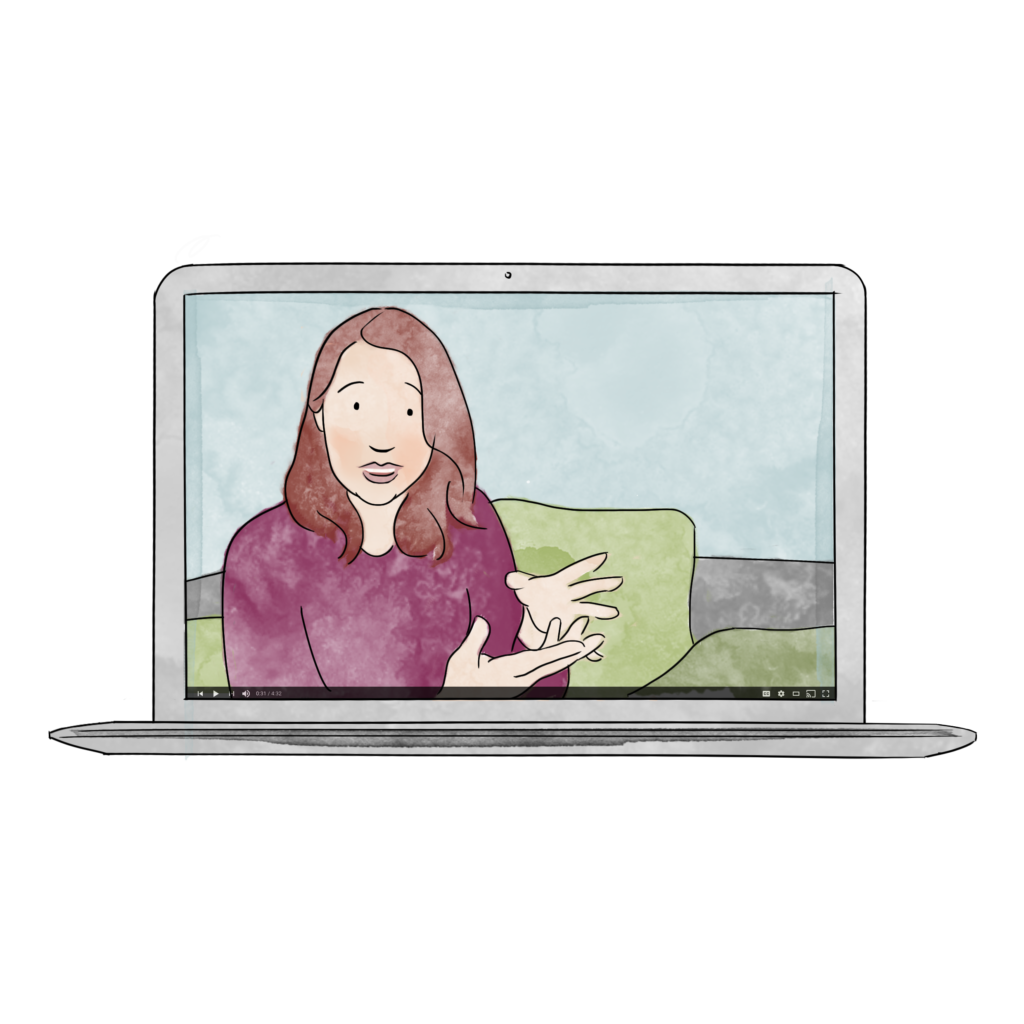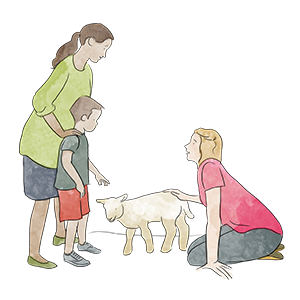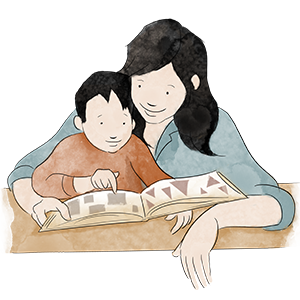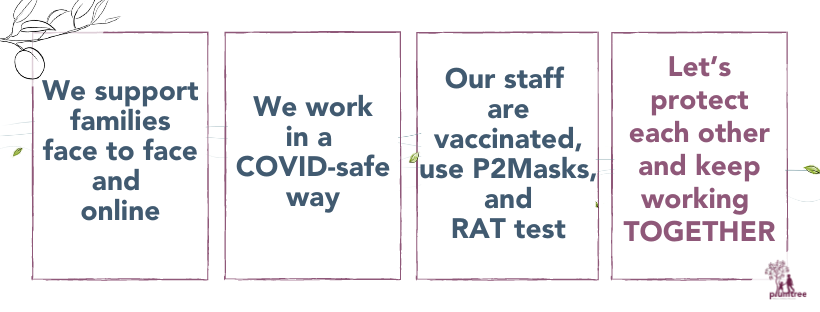Tips to support home learning for lower
primary school children
Raising children is a huge responsibility and during the COVID 19 restrictions, parents are juggling even more roles. Many are also managing work and additional caring — including helping their child with school work at home. Here are a few tips to help make the transition. If you have already started, you will be building on your successes and discarding what was not successful.
There are many ways to approach learning. We will look at four main elements:
– the environment and equipment
– adapting the curriculum
– the learner
– the parent.
Environment and equipment
Not all learning happens at a table. However, it helps to have a table, or part of a table, set up for school work for at least a part of the day. It could be:
- A small table or desk
- A shared kitchen or dining room table.
Prioritise comfort to avoid a ‘wiggly’ child and parent. Ideally, you will have:
- A chair that allows feet to be on the floor and has an upright back to prevent slouching
- A table with a height that enables elbows to rest comfortably
- Especially for table work, consider the space’s lighting, temperature, noise level, potential distractions and air flow. It can be hard to alter these factors, but even small changes can be helpful.
For work that does not need to be table based, such as games and puzzles, look for somewhere on the floor out of the flow of traffic.
Set up storage for items such as worksheets, paper, pencils, glue and scissors. Use designated boxes or baskets that can be moved as required, and encourage children to keep equipment organized. You could get them to cover or decorate the containers!
Check that devices are fully charged. Your children may be ready to learn about the power level symbols on them and start charging when power is low.


Adapting the curriculum
A home doesn’t look or feel like school because so much activity at school happens in large groups. As well as the classroom, children are in assemblies, the library, the school hall and so on. Much time is taken up with simply moving around.
Children do not spend five hours a day at their desks. The work set by teachers to be completed in a day may only require two or three hours of focused work. To decide how to structure your day:
- Check in with your child’s teacher about their expectations
- Consider what motivates your child, and how long they can concentrate. Build up slowly if needed.
Some parents find that they are getting through school work quickly and worry that there must be more to it. For other families, the changes have made it harder for their child to concentrate, and they feel as though nothing is getting done. The COVID-19 restrictions have been particularly disruptive for children who have just started school.
If you have concerns, don’t hesitate to raise them with the teacher. Ask about their priorities and focus on what is relevant. Some teachers prefer their students to maintain a general interest in learning, rather than mastering specific topics. Remember that teachers are also learning in this unfamiliar situation, and approaches may change to accommodate new developments.
Some helpful strategies:
Structure the day so your child knows what to expect
- Use a visual schedule and/or an App such as Choiceworks. Timers (sand glasses, phone timers, clocks) are a great resource.
- If your child is going to school part time, make a visual schedule for the week, as well as the day.
- Alternate between tasks that are easy, hard and fun.
- Work around your child’s energy and family routines.
- Chunk the time. Make this physically visible e.g. have three boxes for morning, middle of day and afternoon tasks. This way, your child can actually see what they need to work through and when it is finished.
- Offer rewards for task completion, such as a high five or a YouTube song and dance if required.
- Include movement breaks, ‘crunch and sip’ and access to water.
Adapt activities to suit your child
- Break tasks down. All tasks have three general steps: Prepare – Do – Pack Away. Each of these steps will have smaller steps within it. Talk with your child’s therapist/teacher for ideas. Your child may not be able to fully complete some tasks, but can be praised for completing steps of a task. It is about quality not quantity, process not product.
- Be flexible. there are often many ways of achieving the same result. You can explore math and science through cooking; colour and size matching by pairing the family’s socks; language through songs and action games. Use your child’s interests and passions for inspiration.
If things aren’t working, don’t keep pushing. Move onto something else and come back to it later or the next day.
The learner
You know your child the best, so take time to reflect on that knowledge. Put a picture together to help you plan the day.
- Your child’s interests and likes, and how can they become part of the day
- Activities they find challenging, and whether it can be minimized or broken into achievable steps
- How they request for help or a break, and how you can help them communicate this
- Whether your child learns best through watching, verbal instructions, trying, or another method
- Your child’s sensory needs, such as whether they are on the move and need ‘bouncing time’ to settle; sluggish and need ‘jumping time’ to wake up; or easily distracted by noise or bright lights.
Some helpful strategies:
- For some families this may be set times, while others need a flexible schedule.
- Aim to meet sensory needs. Many children need movement breaks. Some will respond well to rough and tumble games, while others are calmed by fidget toys.
- Consider emotional regulation. Build ‘down time’ during the day for your child to re-energize and learn to self-regulate.
- Encourage problem solving. When a task is hard for a child, work with them to break it down and uncover the solution rather than jumping in to solve the problem for them. If needed, check in with your child’s teacher and/or therapist to help.
- Build in motivations to the task and day. Motivation can be social (praise and high fives), it can be time playing a favourite game or dancing to a YouTube song. Vary motivators during the day.
- Praise effort as well as outcome. This is crucial to maintaining motivation and self-esteem. Keep the praise genuine and encourage your child, where possible, to comment on and praise their own efforts. Research has shown that to keep children motivated, a ratio of eight positive comments to one negative comment is needed. This will be hard to keep track of, so think positive as often as possible and use negative comments rarely.
- Children (and adults) need to find a topic relevant in order to learn. If your child does not want to write sight words, maybe they can write the names of their family. Your child’s teacher can suggestions adaptations to make.
Talk with your child’s Key Worker for additional support and exploring options.


The parent
The parent as a ‘stand-in’ teacher
As a parent, you are constantly teaching your child—and now school work is added to your responsibilities! This can be daunting.
Think about the things you have already taught your child. They might include nursery rhymes, using cutlery, getting dressed, using the TV remote, staying away from cups of coffee—there are so many different skills that parents teach in everyday life. Think about how you taught one particular skill. It probably included demonstration, explanation, repetition and giving your child opportunities for independent practice. You may have included some humour. They will all help with home schooling.
Tuning to your child—their interests, needs and abilities, motivations and what they genuinely find hard—will help you to be flexible about approaching school learning at home.
Parent and family wellbeing
Many people may be in survival mode during the COVID-19 pandemic, and it will be easy to overlook personal wellbeing. You will want to stay grounded to help your family navigate this new reality, but it is challenging.
It is crucial to find ways to care for yourself. “I don’t do the guilt thing anymore. It’s an extra hat I have to wear,” says one parent. “I need to put on my ‘me hat’ for 20 minutes a few times a day. It’s okay to watch TV for 30 minutes during the day with your child”. In other words, you might suspend some of your usual rules or practices, so that everyone can get through this time of change.
If you have a bad day, close the door on it and start afresh the next day, without judgement. Reach out to friends and family if you need to.
You may find that home schooling is rewarding and provides unique opportunities to be closer to your child. Remember that learning at home does not need to be like learning at school. You can be more flexible and follow your child’s individual interests—something that a teacher with over 20 children cannot do.
A note about behaviour
As we all respond to change differently, some children will also respond to home schooling with behavior changes. They may become quiet, withdrawn and anxious. Many will be unfocused; others may lash out physically by hurting themselves, or others. As a general guide, using a positive approach based on providing predictability and motivation may help manage these responses.
Please raise any concerns about your child’s behaviour with your Key Worker. If further support is needed this can be explored.
Resources
The NSW Department of Education and other providers are making more resources available online. Home schooling has been undertaken for many decades. A range of online resources for long-term home schoolers, including parent support groups, are available.
These websites are just a starting point:
www.education.nsw.gov.au regarding learning from home in case of school closures
https://www.abc.net.au/education
Other resources
To support home schooling, the ABC announced it will be providing extended educational programming on various channels from Tuesday 14 April. This includes:
Blocks of primary school content on ABC ME in the mornings, followed by secondary school content in the afternoons.
Additional online support via ABC Education with videos, interactive resources and games based on Australian curriculum subjects
Original teacher-led mini lessons broadcast on the above channels, created in partnership with the states and territories.
#COVIBOOK, a picture book about COVID-19 created by Manuela Molina of @mindheart.kids for children under the age of 7 is available for download in several languages.
PrAACtical AAC has a range of COVID-19 resources for children.
We may be physically distancing because of COVID-19, but we are all in this together. You can still connect with local networks, families and professionals to share ideas and work with you to get this best from this challenging time. Plumtree is also here to continue to support you and your child.
eBook

Telepractice: a family guide and resource
Created as a part of our 4th Annual Family Conference. The ebook is a practical resource on achieving positive outcomes for children and the entire family during the COVID pandemic—and beyond. A collection of videos by parents of children with disabilities, professionals and peer workers provides insights on enhancing communication, literacy, video modelling techniques and other strategies.
Have questions about Telehealth at Plumtree? Read the FAQ or get in touch. Plumtree is here for you











